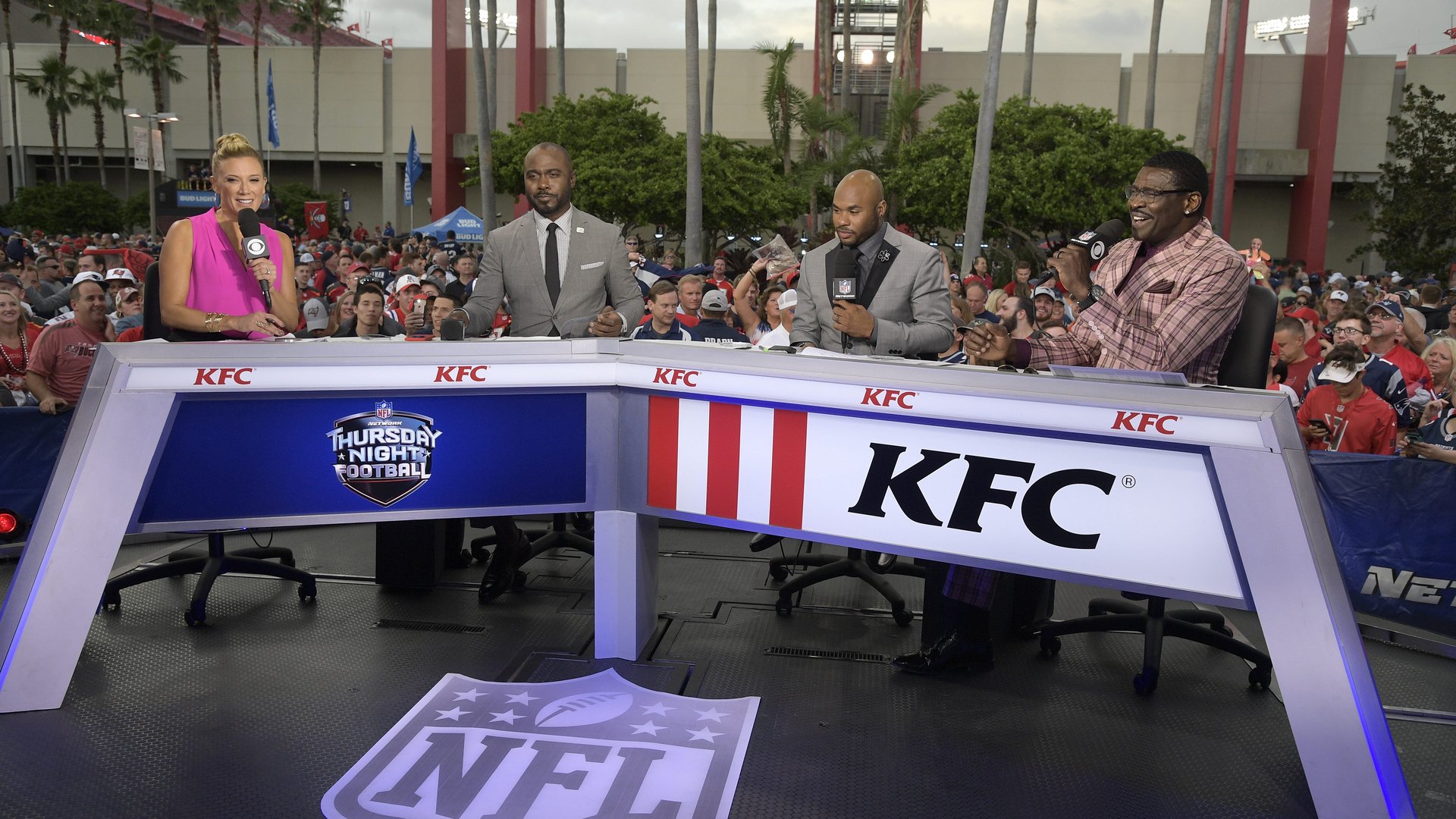Amazon’s next victims might be TV networks funded by commercials
Amazon is acquiring a taste for ads.


Amazon is acquiring a taste for ads.
The e-commerce giant, which is already becoming a force to be reckoned with in digital advertising and is seemingly intent on taking over every industry on the planet, began selling short windows of commercial time this year during its live Thursday night streams of NFL games on its Prime Video subscription service.
Now, it’s developing a free version of Prime Video—with commercials like those that air on regular TV. Amazon is in talks with TV networks, movie studios, and other media companies about creating programming for the platform, Advertising Age reported (paywall).
It’s reportedly looking for back catalogs of children’s programming from TV and movie studios, as well as lifestyle, travel, cooking, and other shows that fit well within Amazon’s e-commerce ecosystem, the publication reported. There, customers can already buy everything they need for a Thanksgiving dinner, for example, from the table to the turkey. A cooking show on Amazon Prime Video’s ad-supported channel could show how best to prepare the meal (or build that table).
A freemium model could also help Amazon breakout from the bevy of subscription-video offerings out there, including rivals Netflix and Hulu, by offering TV shows and movies free alongside ads instead of for a monthly fee. And it could drive new sign-ups to the service, a la Spotify.
Prime Video—which features Amazon original movies like Manchester by the Sea and TV shows like Transparent and Man in the High Castle, the live NFL games, and a rich back catalog of movies and TV shows from other networks and studios—is currently only available with a $99-a-year Prime shipping subscription or through an $8.99-a-month standalone subscription in the US.
But more subscription services are popping up daily, for everything from music and video to food and clothing, and people can only justify spending on so many. From Netflix to HBO to SlingTV, how many subscription-video services does one need, after all? Legacy players like Disney and CBS are launching services of their own, too. More than half of US millennials say there are too many already, and 42% say they think they are paying too much for them, according to a survey published in August from Morning Consult.
Rival Netflix has shied away from advertisements, preferring its members to binge video uninterrupted. And Hulu, which runs ads in all of its packages, did away with its free package last year. But others have embraced ads, even snagging dollars from traditional TV. YouTube, where almost anyone can upload and share videos, thrives on ads. And Facebook, which recently launched a hub for original video, airs ads as well.
Amazon’s massive ecosystem is a big selling point for advertisers, too. It offers a peak at data that’s never been available to them before. During the two minutes or so of ad time Amazon reportedly sells in each NFL game, it tracks how many people purchased or looked up products after seeing ads. It could tell an advertiser like Gillette, for example, how many people bought its razors and blades during and immediately after a game where its ad aired, Yahoo Finance reported. (The other ads that air in the game are national spots that also air on TV broadcasts; they are not sold by Amazon.)
The additional advertising revenue could also support the influx of content coming to the streaming service. Amazon is expected to spend $4.5 billion on video content this year.
Update (Nov 14): Amazon told Quartz no plans to create a free, ad-supported version of Prime Video.